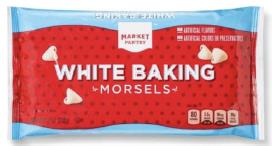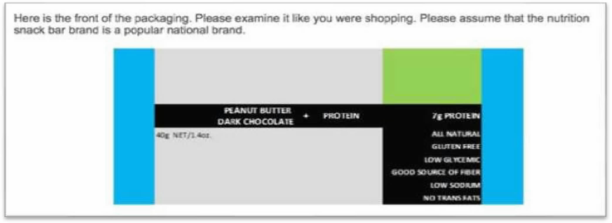Panel: Design Patents, moderated by Sarah Burstein, Suffolk University Law School, panelists include:
Meredith Lowry, Partner, Wright Lindsey Jennings
John Maltbie, Director of Intellectual Property, Civil
Enforcement, Louis Vuitton Americas
Darrell Motley, Shareholder, Banner Witcoff; Adjunct
Professor of Law & Supervising Attorney for IP Clinic – Patents, Howard
University School of Law
Burstein: What role do design patents play in LV’s strategy?
Maltbie: Looking predominantly through TM,
anticounterfeiting as bread and butter. Design patents play a role when we have
them, typically a handbag/jewelry/diamond cuts/chain designs/shoes. Always nice
to throw in but not a mainstay of protection program. Issue: legal is often the
last to know of new designs, so you need to know before the design is launched:
need to explain that legal needs to be part of the process. Seems like a lower
bar for entry for design patent than TM protection. Growing area for us; not
core but nice to have.
Lowry: For many people/products, the first few years are the
only years that matter, and design patents are a tool for that. [Burstein notes
that you can pay a fee for faster prosecution, 4-6 months, even 60 days is
possible.]
Motley: Useful when utility patent protection isn’t
available. [Burstein: even when you don’t pay, design patents issue faster than
utility patents. There is a lot of demand right now that is slowing design
examination.] Apple v Samsung changed perceptions. [Apparently Shark Tank also
talks about design patents.]
Burstein: what changes have you seen?
Lowry: people are now more likely to be aware of design
patents when they come in. More partial designs. Interest in having more assets
to tout to investors/venture capitalists.
Burstein: in the past, small inventors were sometimes diverted
to design patents by skeevy methods (even though the design patent may have
been broader in some ways than the utility patent); this may have contributed to
the disrepute/neglect of the design patent regime.
Maltbie: they used to have a bad rap but that is
changing/changed.
Q: important issues now?
Maltbie: Article of manufacture definitions, as Burstein has
written about. Is the text that defines the article or is it the drawing? What
you call it makes a difference—and can make a difference to anticipation as
well. But manipulation of the description is then a risk.
Virtual designs: how do you get potential IP protection on
the design patent side for designs that don’t exist in physical space? Can you
enforce physical design patents against someone in the virtual space?
Lowry: you can file hundreds of embodiments and the PTO will
say one design. You either dedicate all of those other embodiments to the
public or you file another application claiming priority to the first. Pending
design patents are not published. If that happens there’s no real way of
knowing about submarine design patents. You get the first through and 99 more
are pending. Any later designs aren’t based off the first dates—they’re 15
years from issuance, not filing. So in theory there are certain product
packaging manufacturers that are essentially doling those out when they see
their competitors starting to use a slightly similar design & they can push
one specific design through quickly while the others continue pending.
Potential for continuing for 50 years! She doesn’t have a good proposal for fixing
this, but it’s open. [Why not shifting to application date as with utility
patents?]
Burstein: would publishing design applications after 18 months
like utility patents help?
Lowry: wouldn’t help with the child applications. Instead,
would propose that child applications should be disclosed with issued patents
so people can understand there’s still a risk.
Burstein: there are still children pending from the iPhone application
filed in 2007.
Maltbie: would like to see more on enforcement: how close
does it have to be? Attorneys in practice often like a multifactor test,
whereas design patents seem more black & white. Consider My Other Bag: did
design patent cover a 2D image of a 3D bag printed on a tote bag? Ultimately
decided not to litigate that, thought (apparently wrongly) that the TM claims
were strong enough.
Lowry: lack of an ornamentality threshold is a problem. You
see things that aren’t designs but, e.g., slabs of granite.
Maltbie: with fashion designs it’s possible to miss your
window—you can get a TM registration and have no one to enforce it against by
the time it issues. One strategy we’ve seen: use design patent period to build
secondary meaning, as happened with Coca-Cola bottle.
Presentation: High Hopes: Cannabis Trademarks at the USPTO,
Rachael Dickson, Visiting Assistant Professor, Intellectual Property and
Entrepreneurship Clinic, Suffolk University Law School
State-legal marijuana is widespread, but TM act requires
lawful use in federal commerce. PTO policy: if record indicates that
goods/services violate federal law, registration is refused. If currently
unlawful, ITU will be refused where actual lawful use isn’t possible at the
time of filing; applicant can’t have bona fide intent to lawfully use the mark.
Refusals can’t be overcome if goods contain marijuana or intended for use with
marijuana. After 2018 farm bill defining hemp as distinct from marijuana: Appropriate
identification w/correct wording can allow hemp goods, but FDCA refusal may
still apply even if Controlled Substances Act doesn’t apply b/c hemp can’t be turned
to CBD for ingestible/medicinal/therapeutic use—but huge spike in CBD-related
applications occurred as a result of 2018 change. False statements to PTO do
occur and are bad ideas.
CSA doesn’t apply to clothing/ornamental matter, slogans,
information about controlled substances even if it seems to encourage use of
marijuana, marks for clearly legal goods (e.g. smoking cessation, drug testing),
and marks that include “weed” or other references but don’t actually contain
cannabis and say so in the ID.
PTO is checking specimens more closely, so even if you have
magic words in your ID, if your specimen clearly shows therapeutic etc. use, it
can be rejected. Generally approves fabric goods infused with CBD if they don’t
claim medicinal/therapeutic benefits. W/r/t non-cannabis derived CBD, other
cannabinoids, other drugs, the practice is sometimes inconsistent/evolving but
also generally refused.
What’s next? After Farm Bill, applicants were allowed to
amend to filing date as of first legal date for hemp sales and amending ID to
meet the legal requirements. PTO is likely to move slowly and conservatively
post-federal legalization; FDCA refusals still likely for many products unless
marijuana is completely descheduled.
RT: Interested in reaction to Robert Mikos’s
recent paper which would seem to attack the statutory authority for many of
these rejections.
A: Generally agree with it but getting the PTO to agree is a
very different matter.
















